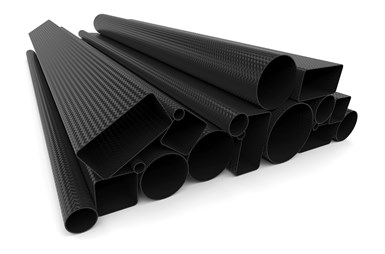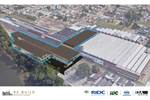Re:Build Manufacturing introduces line of CFRTP tubes, profiles
Available in a range of fiber reinforcements and thermoplastic matrices, Re:Build’s new product offerings provide an affordable, high-performance, high-volume production solution.

Photo Credit: Re:Build Manufacturing
Re:Build Manufacturing (Framingham, Mass., U.S.) is presenting a new line of continuous fiber-reinforced thermoplastic (CFRTP) tubes and profiles, which are produced at the company’s Oribi Composites facility in Denver, Colo., U.S.
Many composite tubes and profiles available today use thermoset resin matrices to support the fiber reinforcement or use non-continuous fiber reinforcements. These materials, while light and stiff, are typically lower in toughness and durability, and are not recyclable. Re:Build’s developed production technology offers several benefits for users including improved impact resistance, vibration dampening, corrosion resistance, high and low temperature resistance, durability and recyclability. Suitable applications for these components include sporting goods shafts, aerospace and automotive tubes and tie rods, medical components, and robotic frames and arms.
Applying highly automated processes developed by Re:Build Manufacturing’s automation team, the components are said to meet stringent performance requirements at a lower price when compared to thermoset materials. In addition, by using distinct layup and modeling software, Re:Build’s engineers can improve the composite layups virtually, and validate manufacturability of complex parts with less iteration, for a lower total cost.
“By combining a unique, automated layup and forming process with robust modeling and simulation tools, we are able to develop and supply high-performance structural thermoplastic tubes and profiles to fulfill demand in the industry,” says Steven Mead, chief commercial officer, Re:Build Manufacturing. “Our customers have been asking us for years for thermoplastic tubes and profiles, and we are now able to offer an affordable, high-volume production solution. When you combine this with our continuous compression molding and high-pressure thermoforming capabilities, Re:Build can design and produce nearly any geometry using continuous fiber thermoplastic materials.”
The tubes are available with a range of glass, carbon and Kevlar fibers, and employ a range of thermoplastic polymers, including PA6, PEI, PPS and many others. Customer deliveries will commence in the first quarter of 2024.
Related Content
-
Optimizing a thermoplastic composite helicopter door hinge
9T Labs used Additive Fusion Technology to iterate CFRTP designs, fully exploit continuous fiber printing and outperform stainless steel and black metal designs in failure load and weight.
-
Plant tour: Albany Engineered Composites, Rochester, N.H., U.S.
Efficient, high-quality, well-controlled composites manufacturing at volume is the mantra for this 3D weaving specialist.
-
Plant tour: Joby Aviation, Marina, Calif., U.S.
As the advanced air mobility market begins to take shape, market leader Joby Aviation works to industrialize composites manufacturing for its first-generation, composites-intensive, all-electric air taxi.















